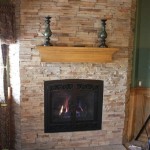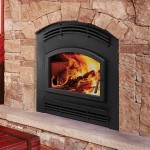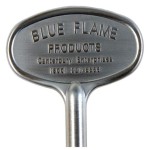Fireplace Curtain Screen: Functionality, Safety, and Aesthetics
Fireplace curtain screens represent a crucial component of fireplace safety and functionality, offering a barrier between the open flame and the surrounding environment. Beyond their safety advantages, these screens contribute to the overall aesthetic of the fireplace and the room it occupies. Understanding the various types, materials, and considerations involved in selecting a fireplace curtain screen is essential for homeowners seeking both safety and visual appeal.
The primary function of a fireplace curtain screen is to contain sparks and embers, preventing them from escaping the fireplace and potentially causing fires. Uncontrolled embers can land on carpets, furniture, or even clothing, posing a significant safety hazard. A properly installed and maintained curtain screen acts as a physical barrier, significantly reducing the risk of fire damage. Furthermore, they can prevent pets and small children from inadvertently coming into contact with the flames, further bolstering safety within the household.
Beyond their practical function, fireplace curtain screens also contribute to the overall aesthetic of a room. They come in a variety of styles, finishes, and materials, allowing homeowners to select a screen that complements their existing décor. From traditional wrought iron designs to more modern and minimalist options, the choices are diverse. The screen can serve as a focal point, enhancing the visual appeal of the fireplace and the surrounding space.
Key Point 1: Types of Fireplace Curtain Screens
Fireplace curtain screens are available in several different types, each with its own distinctive features and benefits. The most common type is the mesh curtain screen, which consists of two overlapping panels of metal mesh suspended from a rod. These panels can be pulled open and closed, allowing for easy access to the firebox. Other types include single-panel screens, which provide a simpler design, and bi-fold screens, offering a more decorative appearance. Tri-fold screens provide a more substantial look and often incorporate intricate designs. Choosing the appropriate type depends on factors such as the size and style of the fireplace, as well as the homeowner's personal preferences.
Mesh curtain screens are widely favored for their practicality and ease of use. The mesh material is effective at containing sparks and embers, while the overlapping panels allow for convenient access to tend the fire. Single-panel screens are a good option for smaller fireplaces or for those seeking a more minimalist aesthetic. Bi-fold and tri-fold screens, on the other hand, often incorporate decorative elements, such as intricate scrollwork or geometric patterns, making them a more visually striking addition to the fireplace.
Regardless of the type chosen, it is crucial to ensure that the screen is appropriately sized for the fireplace opening. The screen should fully cover the opening to prevent sparks from escaping. It is also important to consider the height of the screen, ensuring that it is tall enough to prevent embers from bouncing over the top. Accurate measurements are essential for selecting a screen that provides optimal protection and aesthetic appeal.
Key Point 2: Materials Used in Fireplace Curtain Screens
The materials used in the construction of fireplace curtain screens play a significant role in their durability, appearance, and effectiveness. Common materials include steel, wrought iron, and stainless steel. Each material offers distinct advantages and disadvantages in terms of heat resistance, corrosion resistance, and aesthetic properties.
Steel is a commonly used material due to its strength and affordability. Steel screens are generally powder-coated or painted to enhance their appearance and provide protection against rust. However, steel is susceptible to corrosion over time, particularly if exposed to moisture or harsh cleaning chemicals. Wrought iron is a more durable and aesthetically pleasing option, known for its intricate designs and long-lasting performance. Wrought iron screens are typically more expensive than steel screens, but their durability and classic appearance make them a worthwhile investment for many homeowners.
Stainless steel offers excellent corrosion resistance and a modern, sleek appearance. Stainless steel screens are less prone to rusting than steel screens and can withstand high temperatures without warping or deteriorating. They are often used in contemporary fireplaces and offer a clean, minimalist aesthetic. The choice of material depends on factors such as budget, desired aesthetic, and the level of maintenance the homeowner is willing to undertake. Consideration of these factors ensures that the selected screen will provide both safety and visual appeal for years to come.
Key Point 3: Installation and Maintenance Considerations
Proper installation and regular maintenance are vital for ensuring the safety and longevity of a fireplace curtain screen. The installation process typically involves attaching the screen to the fireplace opening using brackets or a tension rod. It is crucial to follow the manufacturer's instructions carefully to ensure that the screen is securely installed and provides adequate protection.
Regular cleaning is essential for maintaining the appearance and functionality of the screen. Over time, soot and creosote can accumulate on the mesh or metal surfaces, diminishing their appearance and potentially reducing their effectiveness. Cleaning the screen with a soft brush and mild detergent can remove these deposits and restore its original appearance. Avoid using abrasive cleaners, as they can damage the finish and scratch the surface of the screen.
In addition to regular cleaning, it is important to inspect the screen periodically for signs of damage or wear. Check for loose brackets, torn mesh, or signs of rust or corrosion. Repair or replace any damaged components promptly to ensure that the screen continues to provide adequate protection. If the screen is severely damaged or corroded, it may be necessary to replace it entirely. Proper installation and consistent maintenance will extend the life of the fireplace curtain screen and ensure that it continues to provide both safety and aesthetic value.

1 4 Standard Mesh With Top Valance Up To 84 Wide Recessed

Matte Black Recessed Fireplace Screen With Valance For Masonry Fireplaces

Custom Fabricated Mesh Curtain Fireplace Screen

Fireplace Mesh Screens By Condar

48x24 Inch Chain Link Curtain Screen Mesh Panels For Fireplace China Metal Made In Com

Mesh Curtain Sets Stainless Steel 1 4 Weave For Openings 30 To 40 Wide

Spark Fireplace Mesh Screens Hightop

Fireplace Mesh Valance Screens

Fireplace Mesh Curtain Manufacturer Supplier Hightop Screens

Custom Fabricated Mesh Curtain Fireplace Screen Screens Hanging








